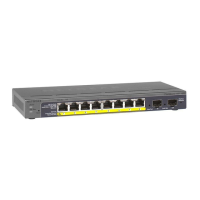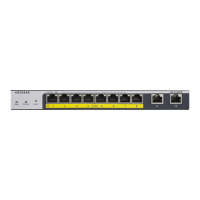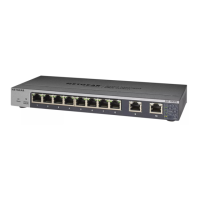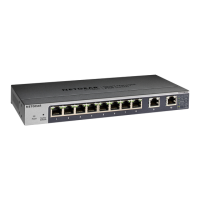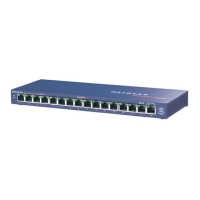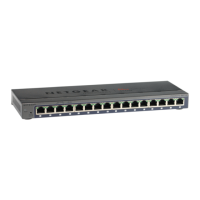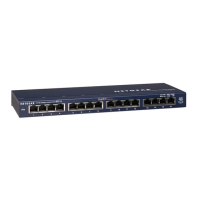When you insert a cable into the switch’s RJ-45 port, the switch automatically performs
the following actions:
•
Senses whether the cable is a straight-through or crossover cable.
•
Determines whether the link to the attached device requires a normal connection
(such as when you are connecting the port to a computer) or an uplink connection
(such as when you are connecting the port to a router, switch, or hub).
•
Automatically configures the RJ-45 port to enable communications with the attached
device. The Auto Uplink technology compensates for setting uplink connections
while eliminating concern about whether to use crossover or straight-through cables
when you attach devices.
On model GS110TUP, RJ-45 copper ports 1–4 support PoE++ and RJ-45 copper ports
5–8 support PoE+.
On model GS710TUP, RJ-45 copper ports 1–8 support PoE++.
SFP uplink port for fiber connectivity
To enable a fiber connection, an SFP fiber uplink port accommodates a standard small
form-factor pluggable (SFP) gigabit interface converter (GBIC, also referred to as
transceiver modules). GBICs are sold separately from the switch.
Model GS710TUP supports the NETGEAR SFP transceiver modules that are listed in the
following table.
Table 3. Supported SFP transceiver modules
DescriptionModelSpeed and Medium
SFP transceiver 1000BASE-SXAGM731F1G Ethernet short-reach fiber
SFP transceiver 1000BASE-LXAGM732F1G Ethernet long-reach fiber
SFP transceiver 1000BASE-TAGM7341G Ethernet copper
For more information about NETGEAR SFP transceiver modules, visit
netgear.com/business/products/switches/modules-accessories.
Note: If you use a third-party passive direct-attach cable (DAC), the length of the cable
must not exceed 5 meters (16.4 feet).
Hardware Installation Guide18Hardware Overview
10-Port Gigabit Ethernet Ultra60 PoE++ Smart Managed Pro Desktop and Rackmount Switches
